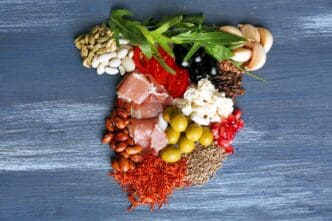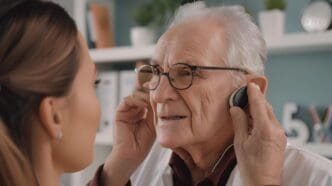In the vibrant, sun-drenched metropolis of Miami, a city known for its pulsating energy and cultural warmth, a powerful, free, and often overlooked tool for mental wellness is exchanged daily on its bustling streets, in its close-knit family homes, and on its sandy beaches: the hug. This simple act of embrace is far more than a social pleasantry; it is a profound biological mechanism that can significantly boost mental health by calming the nervous system, reducing stress, and fostering a deep sense of connection. As rates of anxiety and loneliness continue to be a national concern, understanding the science behind physical touch reveals why a warm hug may be one of the most essential forms of preventative mental healthcare available to everyone.
The Neurochemistry of a Hug
When you receive a warm, consensual hug, a cascade of neurochemical reactions begins within your brain and body. This response is a core part of our evolutionary wiring, designed to signal safety, trust, and social bonding. At the center of this process is a hormone called oxytocin.
Often dubbed the “love hormone” or “bonding hormone,” oxytocin plays a critical role in social connection. Released from the pituitary gland, it promotes feelings of devotion, trust, and attachment. When you hug someone, oxytocin levels rise, creating a sense of calm and contentment that counteracts feelings of anxiety and social fear.
But the benefits don’t stop there. A hug also stimulates the brain to release dopamine and serotonin. Dopamine is a neurotransmitter that is integral to the brain’s pleasure and reward system, leading to a feeling of satisfaction and happiness. Serotonin is crucial for regulating mood, and low levels are often linked to depression and anxiety. A sustained hug can give these feel-good chemicals a natural boost, elevating your mood long after the embrace has ended.
Combating the Stress Response
Perhaps one of the most significant mental health benefits of a hug is its ability to directly combat stress. When we are stressed or anxious, our adrenal glands release a hormone called cortisol. While useful in short bursts for “fight or flight” situations, chronically high cortisol levels can lead to a host of health problems, including anxiety disorders, depression, and a weakened immune system.
Physical touch, especially a hug lasting 20 seconds or more, has been shown to significantly lower cortisol levels. It sends a signal to the brain that you are safe and supported, allowing your parasympathetic nervous system—the “rest and digest” system—to take over. This process slows your heart rate, lowers your blood pressure, and brings your body out of a state of high alert.
Miami’s Cultural Embrace: A Social Buffer
While the need for touch is universal, its expression can vary widely across cultures. Miami, a melting pot heavily influenced by Latin American and Caribbean traditions, is often considered a more “touch-positive” environment. In many of these cultures, physical greetings like a hug or a kiss on the cheek are standard practice, not just among close family but also between friends and acquaintances.
This cultural norm can act as a powerful, built-in buffer against the social isolation that plagues many large cities. The casual, frequent exchange of physical affection reinforces social bonds and creates a pervasive sense of community. From the warm greetings in a Little Havana cafe to the celebratory embraces at a family gathering in Kendall, this cultural fabric fosters an environment where the benefits of touch are integrated into daily life.
This is not to say that everyone in Miami is comfortable with the same level of physical contact, but the general cultural climate can make it easier to initiate and receive this vital form of nonverbal communication. It provides a social script that normalizes connection, potentially contributing to greater resilience and mental well-being within these communities.
The Consequences of Touch Deprivation
To fully appreciate the power of a hug, it is crucial to understand what happens in its absence. A lack of positive physical touch can lead to a condition known as “touch starvation” or “skin hunger.” This is not a formal diagnosis but a term psychologists use to describe a state of longing for physical contact that, when unmet, can have serious psychological consequences.
Individuals experiencing touch starvation often report heightened feelings of loneliness, stress, and depression. The lack of oxytocin and the other positive neurochemicals released by touch can leave the nervous system in a state of chronic unease. This was brought into sharp focus during the COVID-19 pandemic, when social distancing measures deprived millions of this fundamental human need, leading to a well-documented global spike in mental health challenges.
Even in a socially warm city like Miami, modern life can create pockets of isolation. The rise of remote work, reliance on digital communication, and the fast-paced nature of urban living can inadvertently lead to touch deprivation, making intentional efforts to connect physically more important than ever.
The Importance of Consent and Boundaries
The healing power of touch is entirely predicated on one critical factor: consent. A hug is only beneficial when it is wanted, safe, and respectful. An unwanted or unexpected touch can have the opposite effect, triggering the body’s threat response, increasing cortisol, and causing feelings of anxiety and violation.
Navigating this requires emotional intelligence and clear communication. It is essential to be mindful of another person’s body language and verbal cues. If you are unsure whether someone wants a hug, the simplest and most respectful approach is to ask. A simple, “Would you like a hug?” or “I’m a hugger, is that okay with you?” empowers the other person to decide what feels right for them.
It is also important to respect that comfort with touch is highly personal and can be influenced by past trauma, neurodivergence, or cultural upbringing. A healing touch is always one that honors personal boundaries.
How to Cultivate More Healthy Touch
For those feeling the effects of touch starvation, there are many ways to intentionally and safely incorporate more healthy physical contact into your life.
Professional and Therapeutic Touch
Booking a professional massage is one of the most direct ways to meet the body’s need for touch. The sustained pressure from a trained massage therapist can profoundly lower stress and promote relaxation. Similarly, services like chiropractic adjustments, acupuncture, and even getting a haircut or manicure can provide beneficial forms of therapeutic touch.
The Power of Pets
The connection between humans and animals is a powerful source of comfort. The act of petting a dog or cat has been shown to lower blood pressure and release oxytocin in both the human and the animal. The unconditional affection from a pet can be a reliable and comforting source of daily physical contact.
Movement and Social Activities
Engaging in activities that involve physical contact can be a wonderful way to connect. In a city like Miami, partner dancing—such as salsa, bachata, or tango—offers a structured and fun way to experience touch in a social setting. Likewise, contact sports or martial arts practiced in a safe and respectful environment can also fulfill this need.
Self-Touch
Finally, do not underestimate the power of self-touch. Practices like placing a hand over your heart when you feel anxious, giving yourself a hug by wrapping your arms around your body, or using a weighted blanket can stimulate pressure points and create a calming, grounding sensation. These actions can activate the same soothing pathways in the nervous system, offering comfort when touch from others isn’t available.
In the end, the humble hug stands as a testament to our deep-seated need for connection. It is a form of communication that transcends language, a biological imperative that supports our mental and physical health in profound ways. In a world that often feels disconnected, and in a city that thrives on its warmth, remembering and practicing this simple act of kindness is one of the most powerful things we can do for ourselves and for each other.








